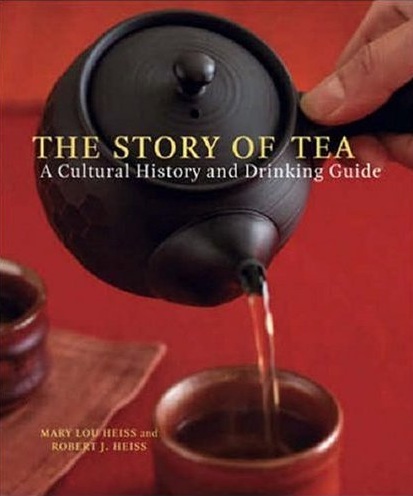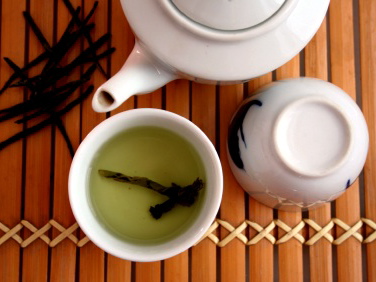
reference-image, l
(article, Mary Lou Heiss)
[%adInjectionSettings noInject=true] [%pageBreakSettings nobreak=true] h3. From the preface As tea merchants, we are drawn to teas that possess a distinctive style, teas that hold the feeling of the place where they were made in the folds and creases of their tiny leaves. We are captivated by the influence of what the French call terroir — that distinction of flavor akin to a cultural stamp of identity that undeniably pinpoints a product to its origin. [[block(sidebar). h1. About the book and author For more than 30 years, the Heisses have owned and operated Cooks Shop Here, a specialty food store in Northampton, Massachusetts. A history, how-to, and encyclopedia of the world's teas, The Story of Tea is a distillation of the knowledge accumulated by the Heisses during their years of buying, selling, and traveling the globe in search of tea. The New York Times profiled the Heisses in September. Excerpt reprinted with permission of Ten Speed Press (2007). ]] Terroir is determined by the physical realities of soil, altitude, climate, and geography, and also by the more evanescent and less apparent threads of history, cultural preferences, and tradition. All of these determinants consort to yield what author Fred Plotkin has referred to as "somewhereness." Think about a glass of chilled, effervescent Champagne or a mug of spicy, rich hot chocolate embellished with a touch of ground chile and cinnamon, and you are envisioning two great examples of "somewhereness." Each beverage is unique and specific to its "somewhere"; each is completely foreign in spirit to the other place. Terroir exists for all foods, but the effects of terroir are most easily understood and tasted in such examples as coffee, cheese, olives and olive oil, rice, spirits, water, wine, and tea. Viewed in concert with these other food products, tea perhaps seems to be the simplest of the group — a humble green leaf that is plucked from a bush, then dried and brewed. In fact, the experienced Chinese farmer who has a few tea bushes growing by his back door can simply pick and parch a few tea leaves in a hot wok over a charcoal fire pan for his own tea-drinking enjoyment. But along its more than 2,000-year journey to today, tea has developed into something much more complicated and place-specific. Time has allowed for the creation of tens of thousands of different teas, each of which are produced by people who till the soil in a multitude of tea gardens large and small. The net result is a staggering amount of tea produced annually — not just tea, but different teas, unique teas, teas that are made nowhere else. Six classes of tea (each with several subclasses) have developed into an industry that ranges from vital to emergent in approximately 50 countries. Statistics for worldwide tea consumption peg tea as second only to water as the most commonly drunk liquid in the world. [%image promo-image float=right width=350 credit="Photo: iStockphoto/tjasam" caption="A many-splendored drink."] [[block(sidebar). h1.Featured recipe]] In tea-producing countries, tea is as important to life as food. Tea is consumed both as a thinking person's beverage and as an everyman's delight. Tea drinking is a tactile, sensory activity that provides both intellectual stimulation and aesthetic inspiration during times of social gathering or solitary contemplation. In the East tea is more highly regarded for these transcendental qualities than it is for its caffeine content or healthful benefits. The pleasurable ritual of tea drinking is deeply encoded in these cultures and religions, and tea permeates and sustains life in ways that those of us in the West simply fail to comprehend. *Also on Culinate: Two articles about taking tea without milk and creative reuse of tea bags.

reference-image, l

promo-image, l

feature-image, l

featurette-image, l